
Huancayo: The Heart of the Peruvian Andes
Discover Huancayo, where ancient traditions meet stunning Andean landscapes, offering a unique blend of cultural richness and natural beauty in the heart of Peru.
Huancayo, nestled in the heart of the Peruvian Andes, is a vibrant city known for its rich cultural heritage and stunning landscapes. As you traverse the bustling streets, you'll encounter a delightful blend of traditional and modern elements. The city is famous for its lively markets, where you can find a variety of handmade crafts and fresh produce, reflecting the region's agricultural roots. Huancayo is also a place of historical significance. The Wanka people, who predate the Inca Empire, have left their mark on the region, and you can explore ancient ruins and archaeological sites. The city's museums and cultural centers offer a deep dive into its storied past, providing insights into the lives of its early inhabitants. Nature enthusiasts will find much to admire in Huancayo. The surrounding mountains and valleys offer numerous outdoor activities, from hiking and horseback riding to exploring hidden waterfalls. The Mantaro River, which flows through the city, adds to the scenic beauty and provides opportunities for fishing and boating. Whether you're seeking adventure or relaxation, Huancayo has something to offer every traveler.
Local tips in Huancayo
- Visit on a Sunday to experience the famous Huancayo Sunday Market, where you can find a wide array of local crafts and foods.
- Try the local delicacies such as 'pachamanca' and 'caldo de cabeza' for an authentic taste of Huancayo's cuisine.
- Plan a trip to the Torre Torre rock formations for breathtaking views and photo opportunities.
- Take a train ride on the Ferrocarril Central Andino for a scenic journey through the Andes.
- Visit the Wanka Identity Park to learn about the region's indigenous culture and history.
Huancayo: The Heart of the Peruvian Andes
Huancayo, nestled in the heart of the Peruvian Andes, is a vibrant city known for its rich cultural heritage and stunning landscapes. As you traverse the bustling streets, you'll encounter a delightful blend of traditional and modern elements. The city is famous for its lively markets, where you can find a variety of handmade crafts and fresh produce, reflecting the region's agricultural roots. Huancayo is also a place of historical significance. The Wanka people, who predate the Inca Empire, have left their mark on the region, and you can explore ancient ruins and archaeological sites. The city's museums and cultural centers offer a deep dive into its storied past, providing insights into the lives of its early inhabitants. Nature enthusiasts will find much to admire in Huancayo. The surrounding mountains and valleys offer numerous outdoor activities, from hiking and horseback riding to exploring hidden waterfalls. The Mantaro River, which flows through the city, adds to the scenic beauty and provides opportunities for fishing and boating. Whether you're seeking adventure or relaxation, Huancayo has something to offer every traveler.
When is the best time to go to Huancayo?
Iconic landmarks you can’t miss
Constitution Square
Discover the heart of Huancayo at Constitution Square, a vibrant park filled with culture, history, and scenic beauty.
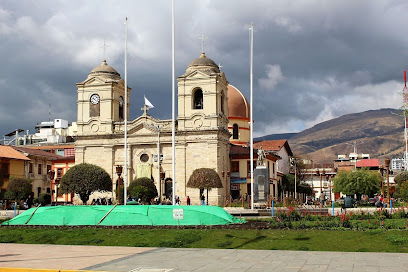
Parque de la Identidad Huanca
Explore the lush landscapes and cultural heritage of Parque de la Identidad Huanca, a serene retreat in the heart of Huancayo, Peru.
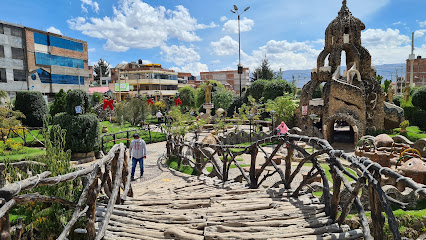
Tupac Amaru Park
Discover tranquility and local culture at Tupac Amaru Park, a lush oasis in the heart of Huancayo, Peru, perfect for relaxation and exploration.
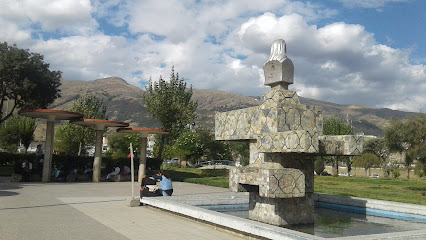
Cerrito de la Libertad
Discover the beauty and tranquility of Cerrito de la Libertad, an enchanting park in Huancayo, Peru, perfect for relaxation and outdoor fun.
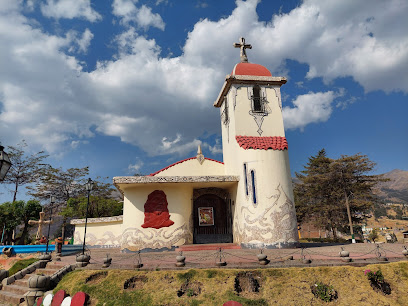
Parque De Los Sombreros El tambo
Discover the enchanting Parque De Los Sombreros El Tambo in Huancayo, where Peruvian culture meets thrilling attractions and family fun.
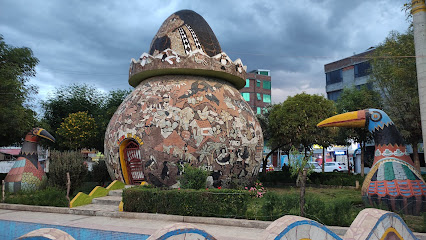
Hotel Presidente Huancayo
Discover the heart of Huancayo at Hotel Presidente—your perfect blend of comfort, local culture, and modern amenities in the Andes.
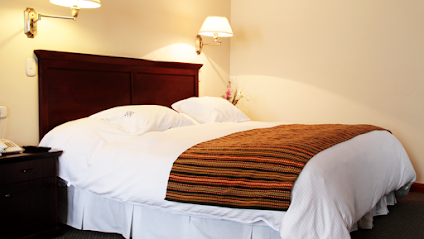
Virgen de la Concepcion
Experience the breathtaking beauty and spiritual serenity of Virgen de la Concepcion, a must-visit tourist attraction in Concepción, Peru.

Hotel Gran Palma Huancayo
Discover luxury and comfort at Hotel Gran Palma Huancayo, your perfect home base for exploring the stunning Andes and vibrant local culture.

Torre Torre
Discover the stunning geological formations of Torre Torre in Huancayo, Peru, a natural wonder that enchants visitors with its beauty and cultural significance.
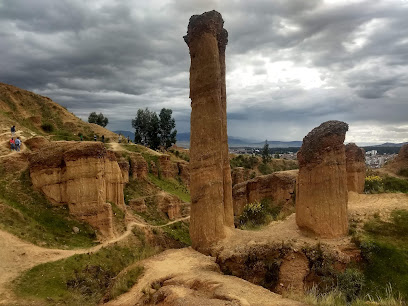
Huancayo Cathedral
Explore the captivating Huancayo Cathedral, a stunning architectural gem and cultural landmark in the heart of Huancayo, Peru.
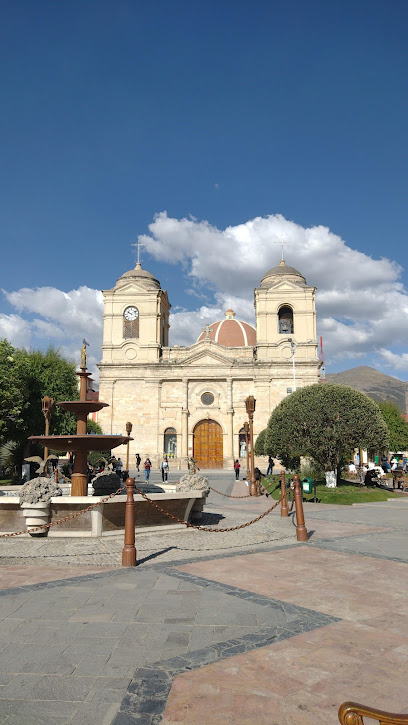
TOURISM CENTRAL S.A. Huancayo, Peru
Experience seamless travel in Huancayo, Peru with Tourism Central S.A. – your trusted transportation service for unforgettable adventures.
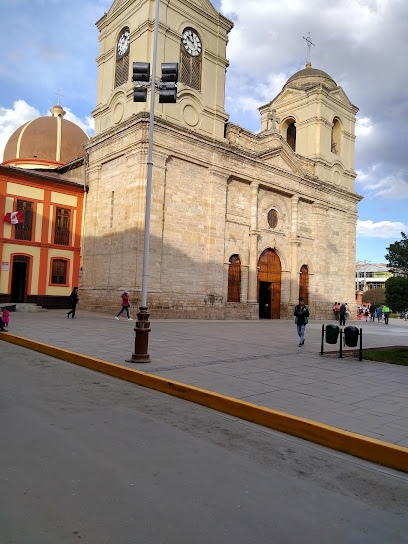
Hotel Turismo Huancayo
Discover the perfect blend of comfort and local culture at Hotel Turismo Huancayo, your gateway to exploring the Andes.

Museum and Archeological Site of Wariwillka
Explore the fascinating history of the Wari civilization at the Museum and Archeological Site of Wariwillka in Huancan, Peru.
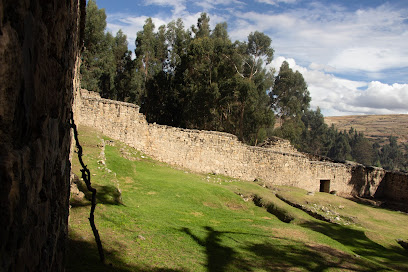
Ovalo De Hualhuas
Explore the rich history and stunning architecture of Ovalo De Hualhuas, a captivating landmark in Hualhuas, Peru.
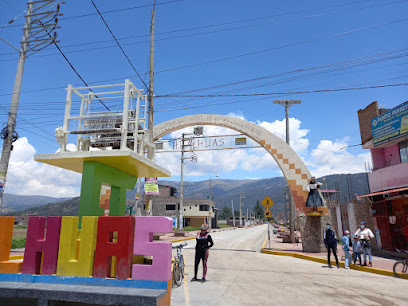
Óvalo de Miraflores
Explore the vibrant heart of Miraflores at Óvalo de Miraflores, a historical landmark rich in culture and stunning views of the Pacific Ocean.
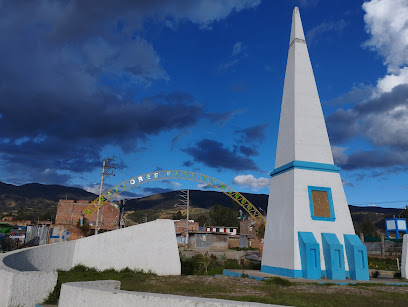
Unmissable attractions to see
Parque de la Identidad Huanca
Explore the lush landscapes and cultural heritage at Parque de la Identidad Huanca, a must-visit park in Huancayo, Peru.
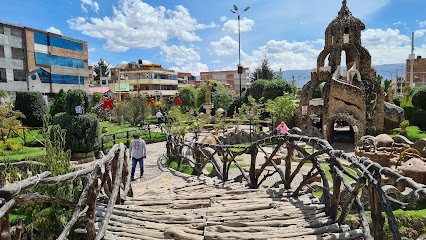
Tupac Amaru Park
Discover the lush landscapes and vibrant culture of Tupac Amaru Park, a serene escape in the heart of Huancayo, Peru.
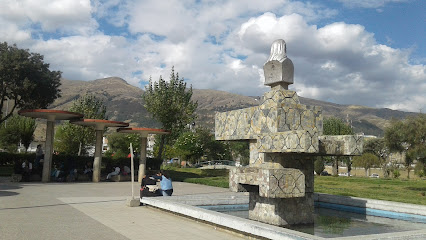
Cerrito de la Libertad
Discover the serene beauty and vibrant culture of Cerrito de la Libertad, a must-visit park and sports hub in Huancayo, Peru.
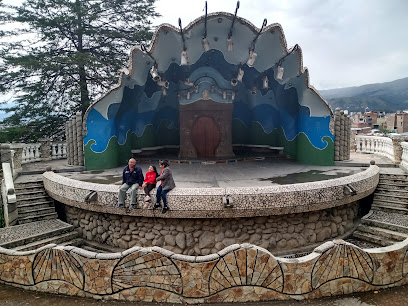
Parque De Los Sombreros El tambo
Discover the vibrant Parque De Los Sombreros El Tambo in Huancayo - a family-friendly theme park full of culture, fun rides, and local crafts.
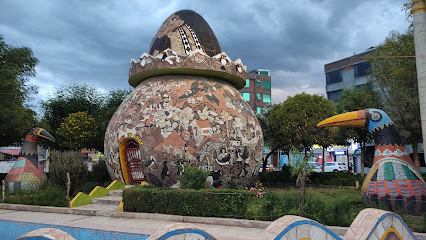
Torre Torre
Experience the breathtaking beauty of Torre Torre, a unique geological marvel in Huancayo, Peru, perfect for nature lovers and adventure seekers.
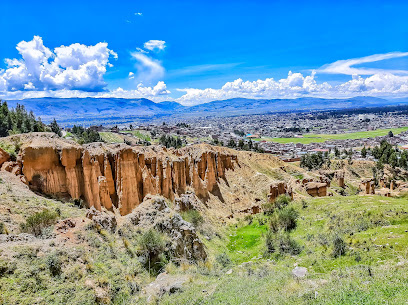
Huancayo Cathedral
Explore the stunning Huancayo Cathedral, a cultural and spiritual landmark in the heart of Huancayo, Peru, showcasing rich heritage and beautiful architecture.
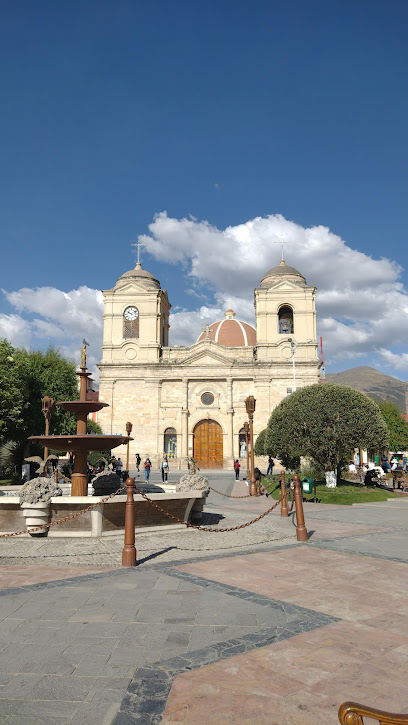
Museum and Archeological Site of Wariwillka
Explore the Museum and Archeological Site of Wariwillka in Huancan, Peru - a captivating destination for history lovers and cultural enthusiasts.
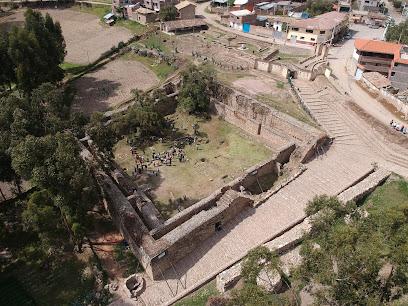
Iglesia La Inmaculada
Discover the architectural beauty and spiritual significance of Iglesia La Inmaculada, a must-visit landmark in Huancayo, Peru.
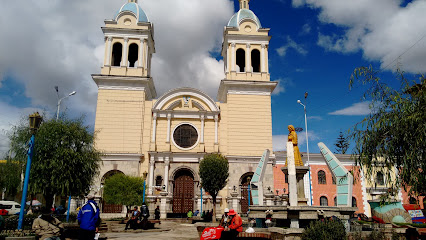
Obelisco Giráldez
Explore the Obelisco Giráldez, a historical monument in Huancayo, Peru, where culture, history, and stunning views come together.
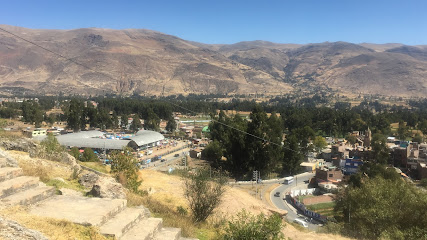
Puentes Colgantes ( Parque)
Experience the beauty of nature at Puentes Colgantes Park in Huancayo, Peru, where hanging bridges and lush landscapes await every adventurer.
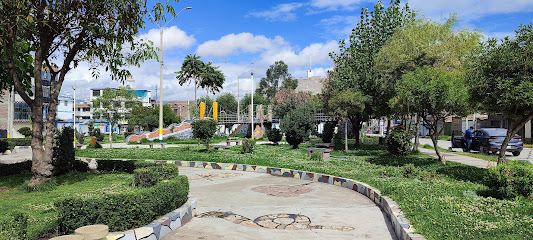
Essential places to dine
Café Colonial
Discover Café Colonial in Huancayo – where traditional Peruvian flavors meet a cozy atmosphere perfect for breakfast, brunch, and live music.
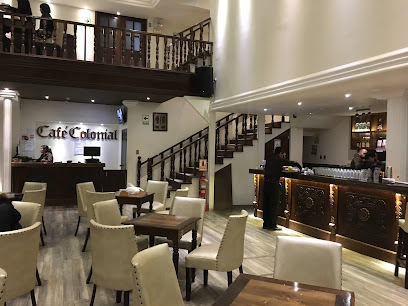
Leopardo
Discover authentic Peruvian cuisine at Leopardo Restaurant in Huancayo – where flavor meets tradition in every dish.
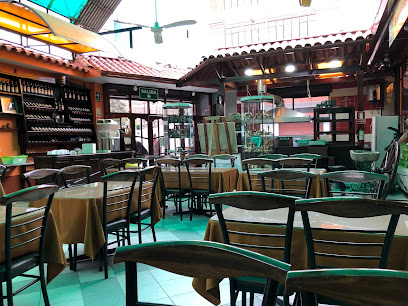
El Inca Restaurante
Savor authentic Peruvian flavors at El Inca Restaurante in Huancayo—where every dish tells a story.
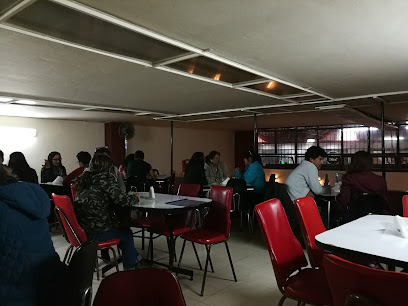
Detrás de la Catedral
Discover authentic Peruvian flavors at Detrás de la Catedral in Huancayo - a must-visit restaurant for food lovers!
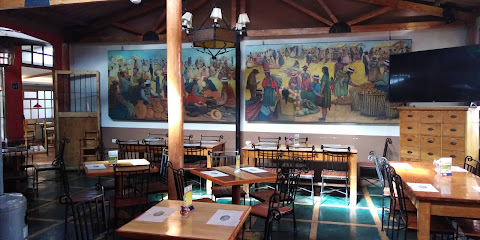
Restaurante Olímpico
Experience authentic Peruvian flavors at Restaurante Olímpico in Huancayo – where every dish tells a story.
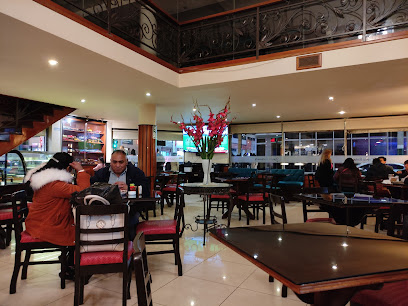
El Padrino Restaurante Tradicional Huancaino
Experience authentic Peruvian flavors at El Padrino Restaurante Tradicional Huancaino in Huancayo - where tradition meets taste.
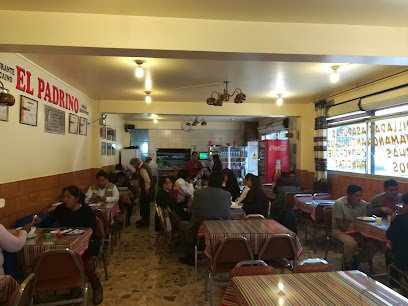
El Erizo
Discover authentic Peruvian flavors at El Erizo in Huancayo – where every dish tells a story.

La Tullpa Restaurante
Discover the essence of Peruvian cuisine at La Tullpa Restaurante, where tradition meets flavor in Huancayo's vibrant dining scene.
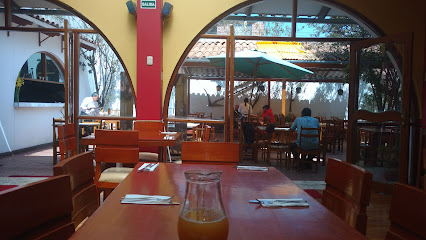
La Cabaña Restaurant Pizzeria
Discover authentic Italian flavors and local Peruvian cuisine at La Cabaña Restaurant Pizzeria in the heart of Huancayo.
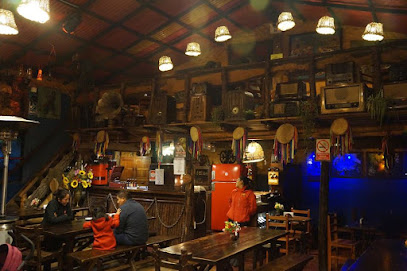
Batán De Oro grill y tragos
Experience authentic Peruvian flavors at Batán De Oro grill y tragos - a family-friendly restaurant perfect for meat lovers in Huancayo.
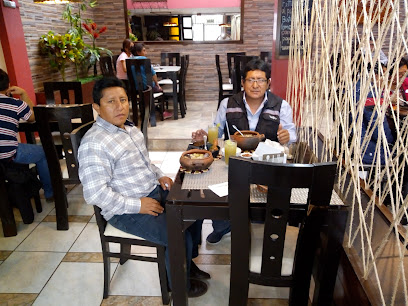
Botánica
Experience Huancayo's culinary delight at Botánica – where vibrant dining meets an energetic bar atmosphere.
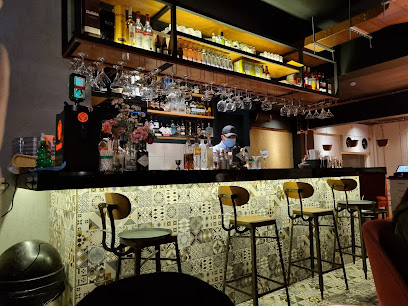
Daruma Restaurant Café
Savor authentic Japanese flavors at Daruma Restaurant Café in Huancayo - where tradition meets modern dining.
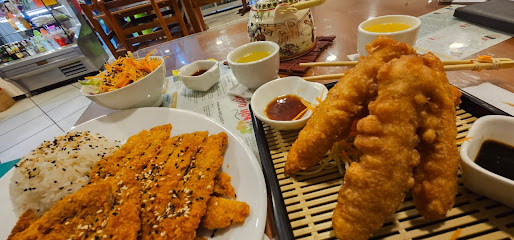
Grupo Ekanlu Tinkuy El Sabor
Experience the rich flavors of Peru at Grupo Ekanlu Tinkuy El Sabor, where tradition meets innovation in a cozy gastropub setting.
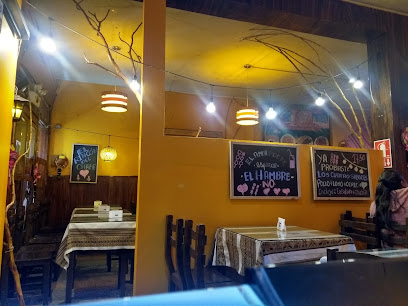
Cevicheria Resto Bar A LO Bravazo!
Discover authentic Peruvian seafood at Cevicheria Resto Bar A LO Bravazo in Huancayo – where fresh flavors meet vibrant culture.
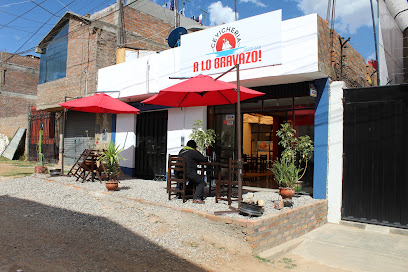
Waykiki
Experience delightful dining at Waykiki in Huancayo—where authentic Peruvian flavors meet global cuisine in an inviting atmosphere.

Markets, malls and hidden boutiques
Real Plaza Huancayo
Discover Real Plaza Huancayo: a bustling shopping mall combining local culture with modern retail experiences in the heart of Huancayo.
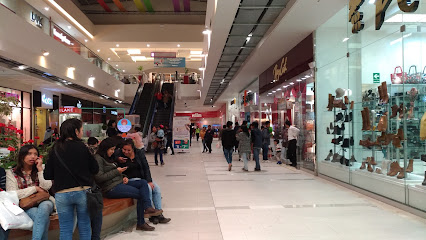
Parque De Los Sombreros El tambo
Discover the fun-filled Parque De Los Sombreros El Tambo, a vibrant theme park in Huancayo, Peru, perfect for family adventures and cultural experiences.
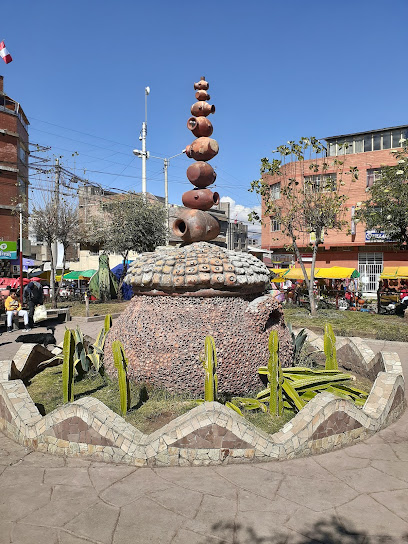
C. C. Constitución
Explore C. C. Constitución, a bustling shopping mall in Huancayo, offering a mix of retail, dining, and entertainment for a memorable experience.
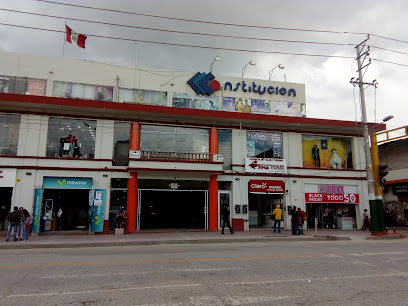
C.C. Huancayo Real
Experience the vibrant shopping scene at C.C. Huancayo Real, the premier destination for retail, dining, and entertainment in Huancayo.
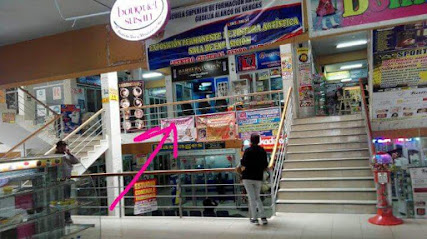
Casa del Artesano
Explore Casa del Artesano in Huancayo for a diverse selection of art supplies and local artisan crafts, reflecting Peru's vibrant artistic culture.
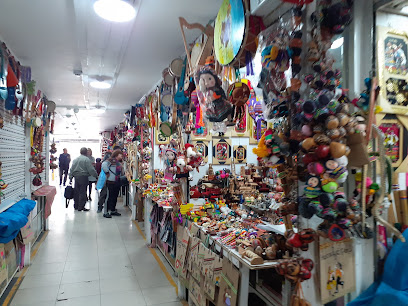
Naturemarket
Explore Naturemarket in Huancayo for a delightful selection of organic foods and natural products celebrating Peru's rich biodiversity.
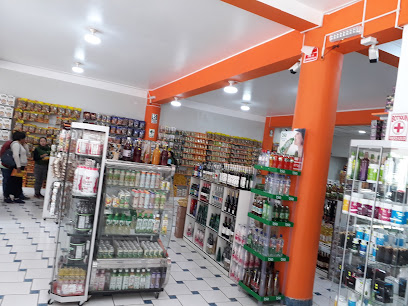
Joyeria Cisne de Oro
Explore Joyeria Cisne de Oro, Huancayo's premier jewelry store, offering handcrafted pieces that celebrate Peruvian craftsmanship and culture.
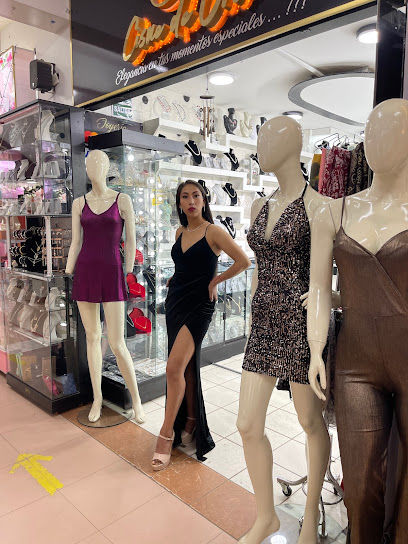
El Mundo del Peluche
Discover the enchanting world of El Mundo del Peluche, a gift shop in Huancayo offering unique plush toys and local handicrafts that capture Peru's vibrant culture.
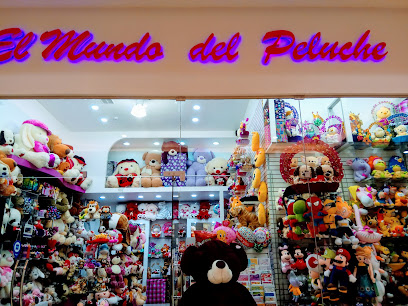
Sweet Sakura Huancayo
Experience the essence of Japan in Huancayo with Sweet Sakura's exquisite and affordable Japanese sweets that delight every palate.
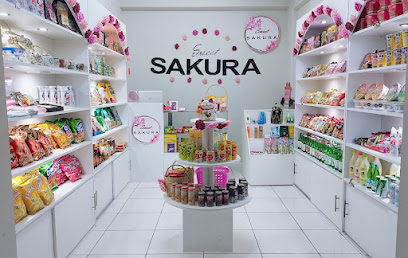
Boutique Sweet Mayte
Explore Boutique Sweet Mayte in Huancayo for exclusive women's fashion that blends local culture with modern trends.

Ozyart.pe
Explore Ozyart Gift Shop in Huancayo for unique Peruvian crafts and souvenirs that celebrate local artistry and culture.
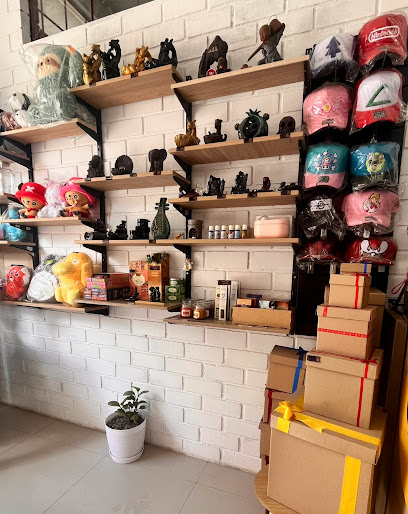
Moixx
Explore Moixx in Huancayo for a unique blend of contemporary fashion and traditional Peruvian designs, perfect for any occasion.

BarriguitasRML
Discover stylish maternity wear at BarriguitasRML, Huancayo’s premier maternity store, designed to make expecting mothers feel fabulous.
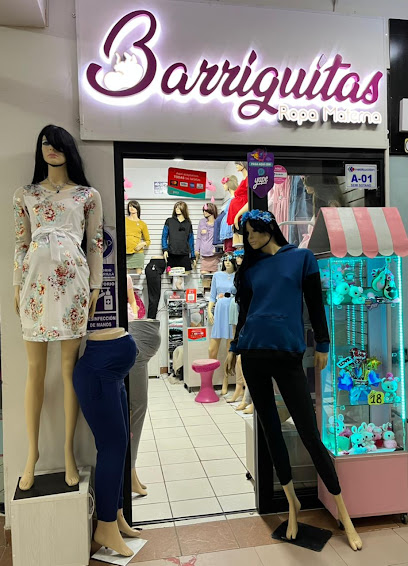
Tiendas Trio SAC
Explore Tiendas Trio SAC in Huancayo for authentic Peruvian treasures, handcrafted souvenirs, and a taste of local culture.
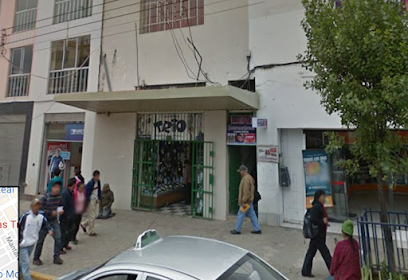
La Mirilla Kids
Discover La Mirilla Kids in Huancayo, Peru – a vibrant store filled with trendy children's clothing and accessories for the young fashionista in your life.
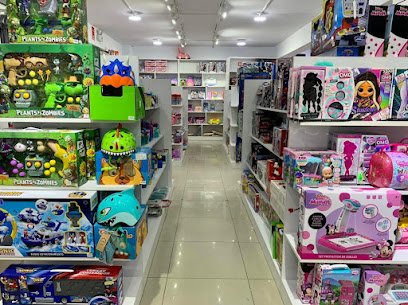
Essential bars & hidden hideouts
CAVA Perú
Experience the vibrant nightlife of Huancayo at CAVA Perú, a must-visit bar for delicious cocktails and a lively atmosphere.
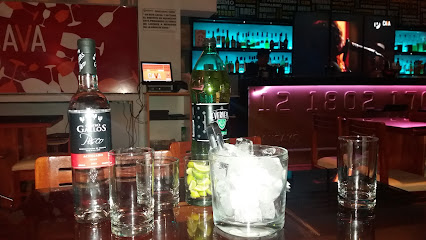
La Previa
Experience the vibrant nightlife of Huancayo at La Previa, where lively atmosphere and local drinks await every visitor.
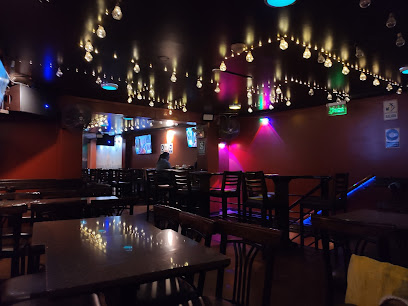
Fontana Lounge Bar
Experience the vibrant culinary scene at Fontana Lounge Bar in Huancayo, where exquisite grilling meets a lively atmosphere.
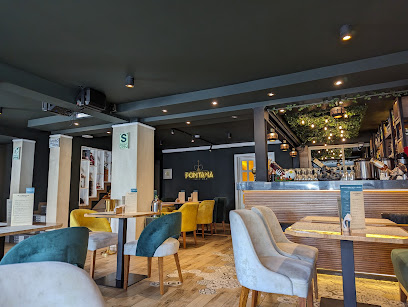
Z I Like Rock
Discover the energetic nightlife at Z I Like Rock in Huancayo, a lively bar featuring diverse music and an inviting atmosphere perfect for tourists.
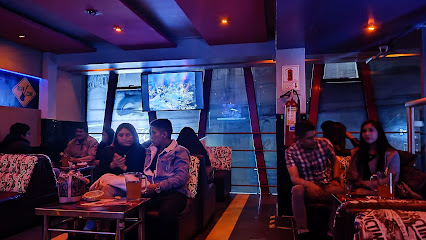
Aura X - Huancayo
Discover the vibrant nightlife at Aura X, a lively bar in Huancayo offering an extensive drink menu and a welcoming atmosphere.
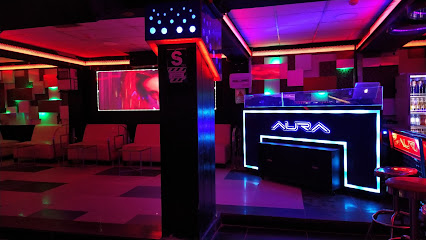
Bar El Bambú
Experience the vibrant nightlife at Bar El Bambú in Huancayo, where great drinks and a lively atmosphere await you in the heart of Peru.
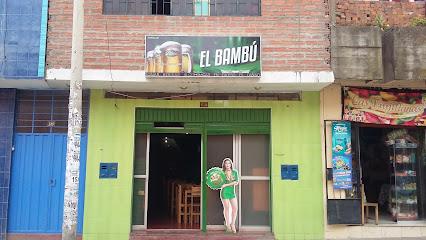
Chiwake's Lounge
Discover a charming oasis in Huancayo at Chiwake's Lounge, where relaxation meets local flavors in a stylish setting.
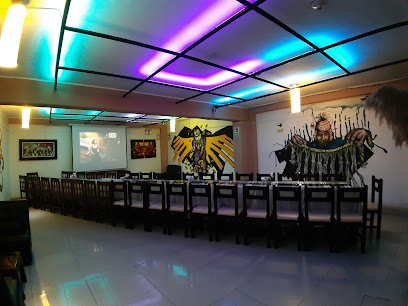
Happy Soul - BARYARTE
Experience the vibrant nightlife of Huancayo at Happy Soul - BARYARTE, where creative cocktails and a lively atmosphere await.

Pitbull
Discover the electrifying nightlife at Pitbull, a lively bar in Huancayo, where music, culture, and great drinks come together for an unforgettable evening.
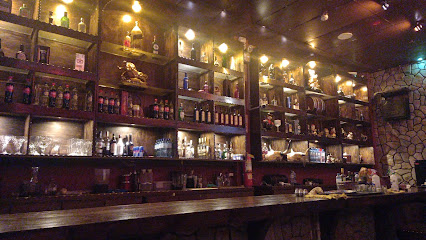
Barbaro
Discover the flavors of Huancayo at Barbaro, a gastropub that blends local ingredients with modern culinary techniques for a memorable dining experience.
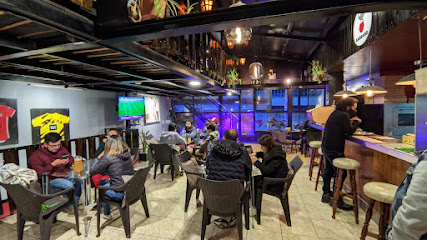
WASKA LOUNGE
Experience the vibrant nightlife of Huancayo at Waska Lounge, where friendly vibes and delicious drinks await in the heart of Peru.
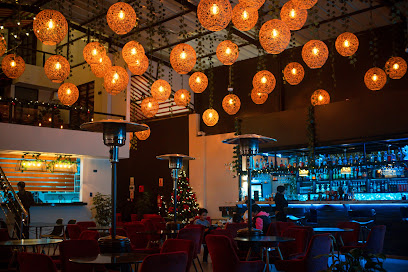
Venecia Restobar
Discover the lively nightlife at Venecia Restobar in Huancayo, a bar that offers a vibrant atmosphere and a selection of refreshing drinks.
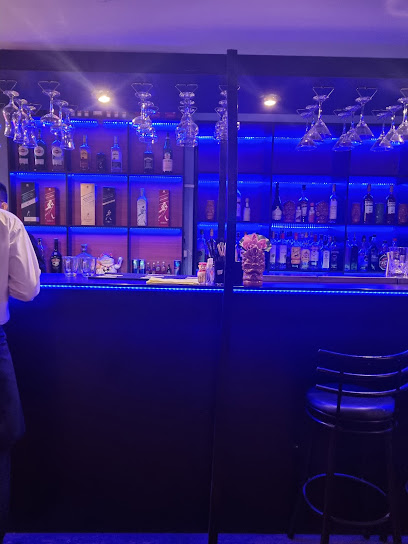
Tempo Huancayo
Discover the vibrant nightlife of Huancayo at Tempo Huancayo, where great drinks and lively atmosphere come together for an unforgettable experience.
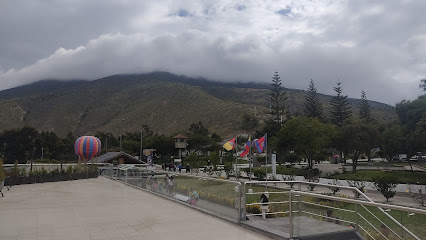
Olympo Restobar
Discover the vibrant nightlife of Huancayo at Olympo Restobar, where delicious food, refreshing drinks, and great company await.
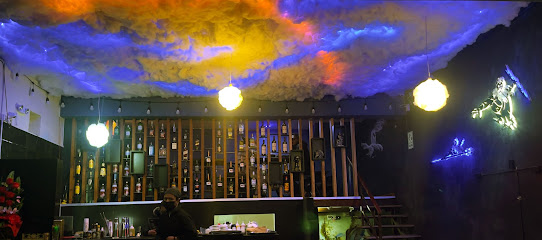
Quechuas
Discover the lively essence of Huancayo at Quechuas, where local drinks and vibrant atmosphere meet.
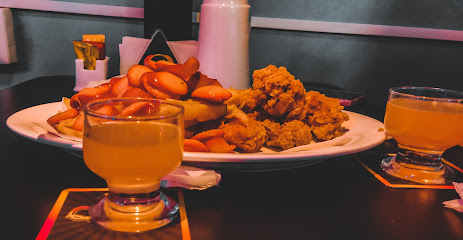
Local Phrases
-
- HelloRimaykullayki
[ree-mai-koo-yai-kee] - GoodbyeAllinlla
[ai-yin-yai-ya] - YesArí
[ah-ree] - NoManam
[mah-nahm] - Please/You're welcomeJatun
[ha-toon] - Thank youSulpayki
[sool-pai-kee] - Excuse me/SorryÑuqami
[nyoo-kah-mee] - How are you?Imaynallam kashanki?
[ee-mai-nai-yam ka-shan-kee?] - Fine. And you?Sumaq. Ñuqan kashanki?
[soo-mak. nyoo-kan ka-shan-kee?] - Do you speak English?Inglis simikunata atinchu?
[ing-lees see-mee-koo-na-ta ah-teen-choo?] - I don't understandÑuqayku manam uchuyta munanki
[nyoo-kai-koo mah-nam oo-choo-yta moo-nan-kee]
- HelloRimaykullayki
-
- I'd like to see the menu, pleaseMenuyta qaywananmi kay
[meh-noo-yta kai-wa-nan-mee kai] - I don't eat meatQaliyta mana mikunchu
[ka-lee-yta mah-nah mee-koon-choo] - Cheers!Kanpai!
[kan-pai] - I would like to pay, pleaseTukuyta qanpayanmi kay
[too-koo-yta kan-pai-yun-mee kai]
- I'd like to see the menu, pleaseMenuyta qaywananmi kay
-
- Help!Yawarapay!
[ya-wa-ra-pai] - Go away!Llaqtaq!
[ya-kta] - Call the Police!Sutiyta runakunata llamkay!
[soo-tee-yta roo-na-koo-na-ta yam-kai] - Call a doctor!Sutiyta wakchaq!
[soo-tee-yta wahk-chak] - I'm lostUchuyta ruraspaq
[oo-choo-yta roo-ras-pak] - I'm illRiqsisqan
[reek-sis-kan]
- Help!Yawarapay!
-
- I'd like to buy...Allintaqniyta qallarinayki
[ai-yin-tak-nee-yta ka-li-na-ree-kee] - I'm just lookingKayan wañuy
[kai-yan wah-nyoo-ee] - How much is it?Imaynayki?
[ee-mai-nai-kee] - That's too expensiveSunturpi kachkan
[soon-toor-pee kach-kan] - Can you lower the price?Qatipayta qaywakuy
[ka-tee-pai-yta kai-wa-kooi]
- I'd like to buy...Allintaqniyta qallarinayki
-
- What time is it?Imaynallam kashanmi?
[ee-mai-nai-yam ka-shan-mee] - It's one o'clockTaytan pachak
[tie-tan pa-chaak] - Half past (10)Chay pachapi
[chai pa-cha-pee] - MorningP'unchay
[poon-chai] - AfternoonChawpi
[chow-pee] - EveningInti
[een-tee] - YesterdayIllapa
[eel-lah-pai] - TodayKuyay
[koo-yai] - TomorrowKutin
[koo-teen] - 1Huk
[hook] - 2Iskay
[ees-kai] - 3Kimsa
[keem-sa] - 4Tawa
[ta-wa] - 5Pisqa
[pees-ka] - 6Suqta
[sook-ta] - 7Qanchis
[kahn-chees] - 8Pusaq
[poos-ak] - 9Isqun
[ees-koon] - 10Chunka
[choon-ka]
- What time is it?Imaynallam kashanmi?
-
- Where's a/the...?Mayqan...
[mai-kan] - What's the address?Nispa rimanakuy?
[neess-pa ree-man-ah-kooi] - Can you show me (on the map)?Mapapiyta qallariniyki?
[map-pa-pee-yta ka-li-ree-nee-kee] - When's the next (bus)?Maypi chay...
[mai-pee chai] - A ticket (to ....)Chiqan...
[chee-kan]
- Where's a/the...?Mayqan...
History of Huancayo
-
Before the arrival of the Spanish, the Huancayo region was inhabited by the Wanka people. The Wankas were known for their fierce resistance to both the Inca Empire and later the Spanish conquistadors. They had a rich culture, with advanced agricultural practices and intricate textile weaving. The remnants of their civilization can be seen in various archaeological sites around Huancayo.
-
In the late 15th century, the Inca Empire, under the leadership of Pachacuti, conquered the Wanka people. The Incas incorporated the region into their vast empire, bringing their own administrative and agricultural techniques. The Inca road system, which connected Cusco to other parts of the empire, passed through Huancayo, making it an important stop for trade and military movements.
-
In the 16th century, the Spanish arrived and began their colonization of the region. Huancayo was officially founded on June 1, 1572, by the Spanish conquistador Jerónimo de Silva. The Spanish introduced Christianity, which led to the construction of several churches and the conversion of the local population. The city's strategic location made it a vital center for Spanish administration and commerce.
-
Huancayo played a significant role in Peru's struggle for independence from Spanish rule. On November 20, 1820, the city was the site of a major battle between the Spanish royalist forces and the independence fighters led by General Juan Antonio Álvarez de Arenales. The victory by the independence forces marked a turning point in the fight for freedom. Huancayo was later declared a 'Heroic City' for its contributions to the independence movement.
-
On December 15, 1839, the Treaty of Huancayo was signed, bringing an end to the Peruvian-Bolivian Confederation. The treaty was a monumental event in the history of Peru, as it dissolved the confederation and restored Peru's sovereignty. This event marked a new chapter in the political landscape of the country and solidified Huancayo's place in national history.
-
Today, Huancayo is known as the commercial and cultural hub of the central Peruvian Andes. The city hosts numerous festivals, such as the Semana Santa (Holy Week) and the Feria Dominical de Huancayo (Sunday Fair), which showcase traditional music, dance, and crafts. The city's economy is bolstered by agriculture, commerce, and tourism, making it a vibrant and dynamic place to visit.
Huancayo Essentials
-
Huancayo is located in the central highlands of Peru. The most common way to reach Huancayo is by road from Lima, the capital city. The journey by bus takes approximately 6 to 8 hours, with several bus companies offering daily services. Alternatively, you can take a train from Lima to Huancayo. The Ferrocarril Central Andino offers one of the highest train routes in the world, with breathtaking views of the Andes mountains. The train journey is slower, taking around 12 hours, but it provides a unique and scenic experience.
-
Once in Huancayo, you can get around using various local transportation options. Taxis are widely available and relatively inexpensive. For a more local experience, you can use the 'combis' or 'colectivos', which are shared minibuses that operate on set routes throughout the city and surrounding areas. Bicycle rentals are also an option for those who prefer to explore at their own pace.
-
The official currency in Peru is the Peruvian Sol (PEN). Credit cards are accepted in most hotels, restaurants, and larger shops in Huancayo, but it is advisable to carry some cash for smaller establishments and markets. ATMs are available throughout the city, and foreign exchange services can be found in banks and authorized exchange bureaus.
-
Huancayo is generally a safe destination for tourists, but it is important to take standard precautions. Avoid walking alone at night in unfamiliar areas and be cautious of your belongings in crowded places, such as markets and bus stations. Some neighborhoods, like Chilca and El Tambo, have higher crime rates and should be visited with caution, especially after dark.
-
In case of an emergency, dial 105 for police assistance and 116 for medical emergencies. Huancayo has several hospitals and clinics that can provide medical care. It is recommended to have travel insurance that covers medical emergencies. Pharmacies are widely available for minor health issues and over-the-counter medications.
-
Fashion: Do dress in layers, as the weather can change rapidly in the highlands. Avoid wearing flashy jewelry or expensive accessories that might attract unwanted attention. Religion: Do respect local customs and traditions, especially during religious festivals and when visiting churches. Public Transport: Do be courteous and offer your seat to elderly passengers. Don't eat or drink on public transport. Greetings: Do greet people with a friendly 'Buenos días' (Good morning) or 'Buenas tardes' (Good afternoon). A handshake is common when meeting someone for the first time. Eating & Drinking: Do try local dishes such as 'pachamanca' and 'papa a la huancaína'. Don't refuse food or drink offerings, as it is considered impolite.
-
To experience Huancayo like a local, visit the Sunday market, known as 'Feria Dominical', where you can buy fresh produce, local crafts, and traditional clothing. Engage with locals, who are often friendly and eager to share their culture. Don't miss the 'Parque de la Identidad Wanka', a park dedicated to the local Wanka culture, and take a stroll along the 'Calle Real', the main street of Huancayo, to experience local life. For a unique experience, visit the nearby Wariwillka archaeological site, which provides insight into the pre-Inca Wanka culture.
Trending Landmark in Huancayo
-
Constitution Square
-
Parque de la Identidad Huanca
-
Tupac Amaru Park
-
Cerrito de la Libertad
-
Parque De Los Sombreros El tambo
-
Hotel Presidente Huancayo
-
Virgen de la Concepcion
-
Hotel Gran Palma Huancayo
-
Torre Torre
-
Huancayo Cathedral
-
TOURISM CENTRAL S.A. Huancayo, Peru
-
Hotel Turismo Huancayo
-
Museum and Archeological Site of Wariwillka
-
Ovalo De Hualhuas
-
Óvalo de Miraflores
Nearby Cities to Huancayo
-
Things To Do in Ayacucho
-
Things To Do in Lima
-
Things To Do in Ica
-
Things To Do in Machu Picchu
-
Things To Do in Huaraz
-
Things To Do in Cusco
-
Things To Do in Trujillo
-
Things To Do in Arequipa
-
Things To Do in Puno
-
Things To Do in Chiclayo
-
Things To Do in Copacabana
-
Things To Do in Tacna
-
Things To Do in Arica
-
Things To Do in La Paz
-
Things To Do in Iquitos








